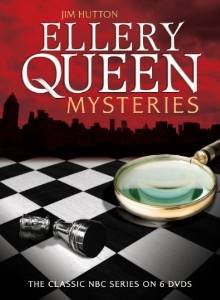
These intriguing disaster films are reviewed by Bud:
Aviation disasters have been much in the news this past year with the most prominent stories being the mysterious disappearance of Malaysia Flight 370 over the Gulf of Thailand and the loss of Malaysia Flight 17 over the Ukraine. The media made much of these tragic events and the public avidly followed the articles because, despite their grievous nature, stories of airplane accidents are inherently gripping. Air disasters occur rarely but when they do the destruction is usually so large scale and dreadful that our attention is just drawn to them.
The non-fiction DVD series, Mayday! Air Disasters shows just how riveting these occurrences can be. This documentary program, which also aired under the title, Air Emergency, profiles twenty-nine different disasters, most, but not all, aviation accidents. Some of the events covered are:
Unlocking Disaster During United Flight 811 from Honolulu to New Zealand, the door to the cargo hold spontaneously opened tearing off a piece of the fuselage in the process and sucking several passengers out of the plane. The parents of one of the lost passengers worked tirelessly to identify the cause of the accident and hold the aviation industry responsible.
Hanging By A Thread Aloha Airlines Flight 243 was flying 24,000 feet over the Hawaiian Islands when suddenly thirty-five feet of the plane’s upper fuselage peeled off, completely exposing the first five rows of passengers to the open sky. Can a passenger jet remain airborne with this much damage?
Out of Control Twelve minutes into a flight from Tokyo to Osaka Japan, JAL Flight 123 mysteriously malfunctions and for over thirty agonizing minutes plunges up and down as the anguished crew fight to regain control of the plane.
Fight For Your Life A suicidal company employee hitches a ride on FedEx Flight 705. Mid-flight he attacks the crew with hammers and a spear gun. The badly injured pilot looks for a place to land while his co-pilot, also seriously wounded, engages in desperate fisticuffs with their crazed passenger.
Falling From the Sky While flying from Kuala Lumpur to Perth, Australia, British Airlines Flight 009 begins experiencing very unusual phenomena. A strange haze drifts into the passenger compartment. A “brilliant, white shimmering light” appears to be clinging to the plane and 20-foot long flames start shooting from the engines which then proceed to shut down one by one.
Ghost Plane En route over Greece, tourist flight Helios 522 with 100 passengers on board cannot be contacted by anyone on the ground. Army jets sent to check on it find something very strange. The plane is flying normally but no one on board is moving. The plane’s occupants all appear to be unconscious or dead. What is going on?
These are just a few of the many intriguing stories covered in a series that totals 12 discs. The first part of each episode uses film footage of the actual incidents, interviews with the people involved and recreations to show what happened. The second part explains why it happened. The accident investigation process is fascinating as scientists and aviation experts try to determine exactly what went wrong.
You learn a lot about avionics, the airline industry and human behavior under extreme conditions. You also pick up some memorable, if occasionally creepy, factoids. Did you know that if you are unfortunate enough to somehow exit an airplane at 23,000 feet it will take you approximately four minutes to hit the ground?
This show proved to be compulsively watchable. It’s the best kind of reality TV because it’s both educational and entertaining and despite the potential for being lurid, is not exploitative or overtly gory. However, if you have a fear of flying, you may find it disquieting.
I’d recommend it for anyone with an interest in aviation, science or human drama.
Check the WRL catalog for Mayday! Air, Land and Sea Disasters and Mayday!:Air Disasters


















